On our last full vacation day, and our last day to be on the Pacific coast, we headed to Cannon Beach, a picturesque town and shoreline in northern Oregon.
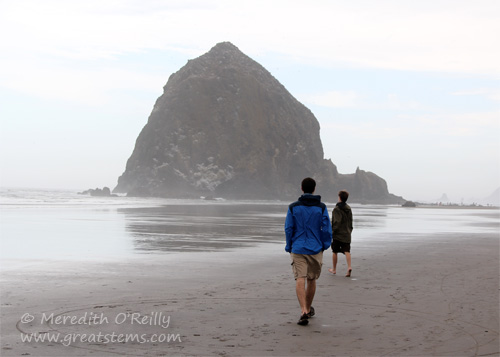
Cannon Beach’s most famous landmark is Haystack Rock, a towering monolith of 235 feet, surrounded by other rocks collectively known as the Needles. The rocks, or sea stacks, are volcanic in origin, formed millions of years ago from lava that flowed down the Columbia River valley and pushed up again through the sea floor. Haystack Rock is famous, too, for being in a few movies, including Kindergarten Cop and The Goonies. I’m going to have to watch those again now.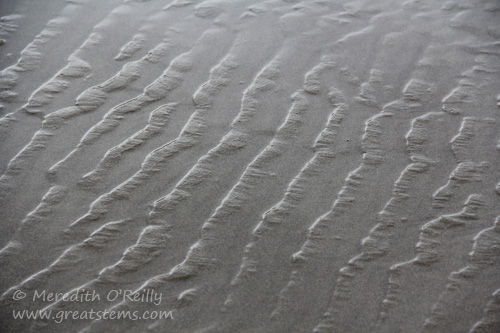
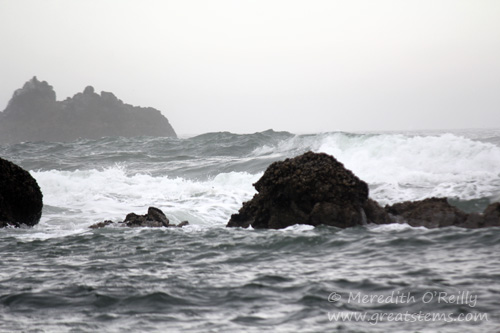
By this day on our vacation, not only had fog returned, but a storm out on the ocean was contributing to rough waves and looming dark skies.
I’m glad we arrived when we did, because we were able to get a few minutes of safe tide-pool viewing before the storm’s sea surges made it too hazardous. The tide pools are right in front of Haystack Rock, but of course you need to be there at low tide to experience them.
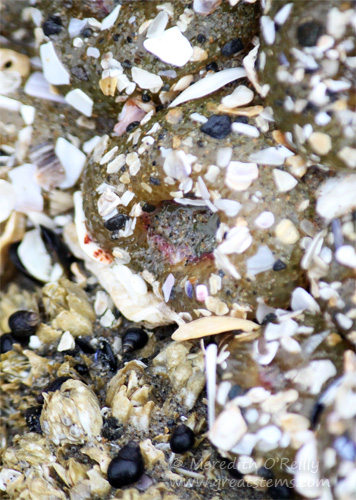 Aggregating anemones, closed up during low tide, were covered in sand and broken shell bits, which help prevent desiccation. Interspersed among them were barnacles and small sea snails, which had their own methods to handle low-tide exposure.
Aggregating anemones, closed up during low tide, were covered in sand and broken shell bits, which help prevent desiccation. Interspersed among them were barnacles and small sea snails, which had their own methods to handle low-tide exposure.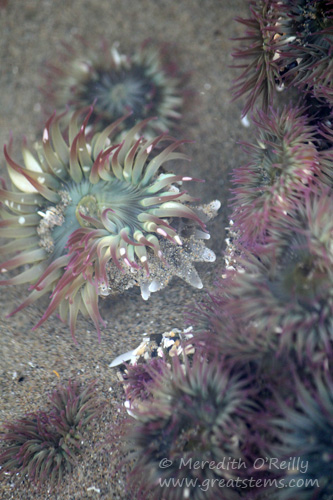 With fascination, we watched an underwater drama take place as this aggregating anemone actively attacked a nearby colony with its specialized stinging tentacles, called acorhagi. We had recently watched a similar attack at Gerstle Cove, but this smaller anemone moved very quickly and with purpose — the speed of movement was fascinating in its own right.
With fascination, we watched an underwater drama take place as this aggregating anemone actively attacked a nearby colony with its specialized stinging tentacles, called acorhagi. We had recently watched a similar attack at Gerstle Cove, but this smaller anemone moved very quickly and with purpose — the speed of movement was fascinating in its own right.
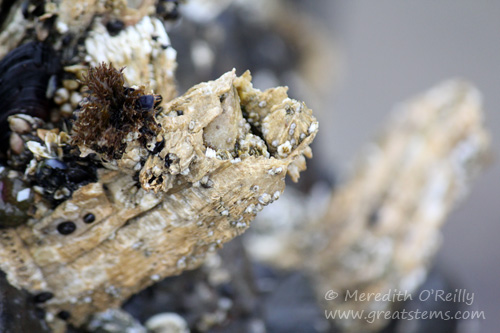 When acorn barnacles are overcrowded on a rock, they sometimes grow as a columnar formation, as you can see here.
When acorn barnacles are overcrowded on a rock, they sometimes grow as a columnar formation, as you can see here.
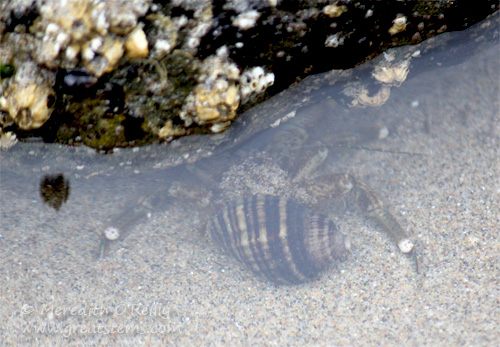 Just below, this hermit crab tried to quickly hide, but I snapped a picture just in time.
Just below, this hermit crab tried to quickly hide, but I snapped a picture just in time.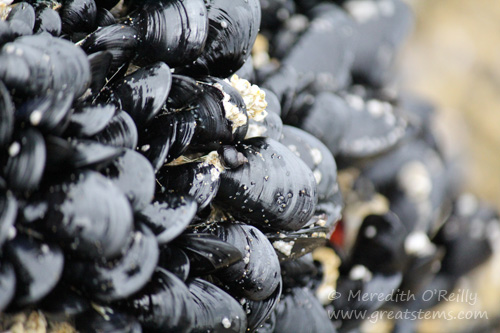 Present on other rocks were large aggregations of these beautiful dark Blue Mussels, also called Bay Mussels. They are relatively smooth in appearance, lacking the radiating ribs of the California Mussel.
Present on other rocks were large aggregations of these beautiful dark Blue Mussels, also called Bay Mussels. They are relatively smooth in appearance, lacking the radiating ribs of the California Mussel.
FYI, as I wrote this post, I happened upon a great online guide to Oregon’s intertidal marine life and I feel obligated to share it. This guide provides a thorough look at many species one might discover at low tide along the Pacific Coast, whether in Oregon, California, or Alaska. Many of the them we saw at Cannon Beach, but the guide also makes me realize just how much we didn’t get to see!
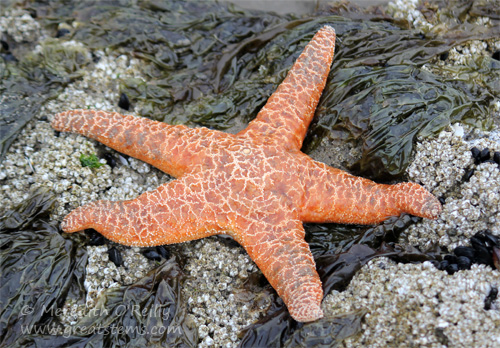 This beautiful ochre sea star was very exposed, but I hoped the surging waters would soon cover it.
This beautiful ochre sea star was very exposed, but I hoped the surging waters would soon cover it.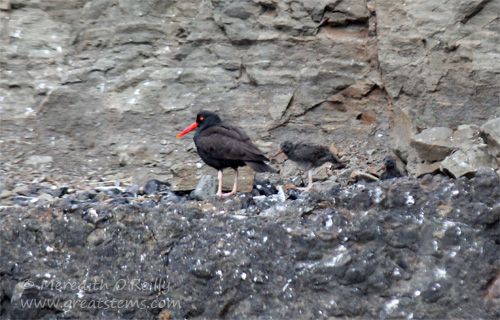
Aside from offering protective sites for a variety of marine species, Haystack Rock is also an important nesting location for 14 different kinds of seabirds, such as cormorants, auks, and gulls. Here is a family of Black Oystercatchers. Look closely — can you see both of the babies? Apparently Oystercatchers eat a lot of mussels and limpets but surprisingly very few oysters.
Seabirds such as these choose rocky islands for raising their young as a way to avoid most predators, because the birds are far more awkward and vulnerable on land. However, peregrine falcons, bald eagles, and other flying predators are still a threat, as are human disturbance and the potential plummet for young to the rough ocean waters below.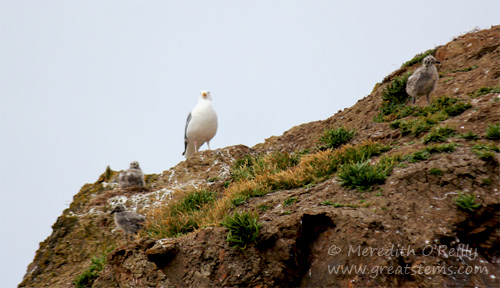
Even though gulls also nest on the rock (there are 3 young ones with their parent in the photo above), they can be predators, too, nabbing unattended eggs or baby birds.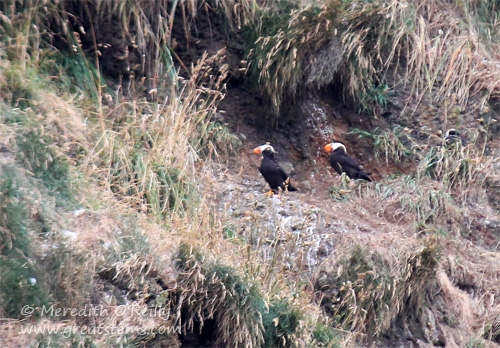 We saw Common Murres and Pigeon Guillemots on the rock, but we were particularly excited to see other members of the the auk family there — Tufted Puffins. We watched as they gathered fish from the sea and returned to their nesting spots on the rock.
We saw Common Murres and Pigeon Guillemots on the rock, but we were particularly excited to see other members of the the auk family there — Tufted Puffins. We watched as they gathered fish from the sea and returned to their nesting spots on the rock.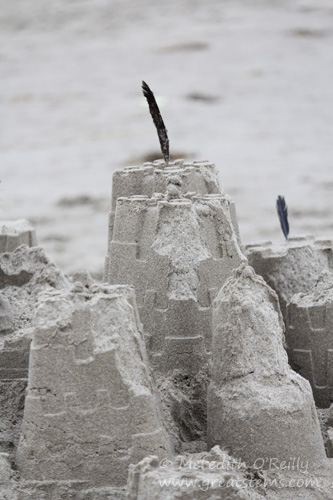 Cannon Beach is also great for good old-fashioned play, particular in good weather. But despite the looming storm and rough waves, some visitors still spent time building castles in the sand.
Cannon Beach is also great for good old-fashioned play, particular in good weather. But despite the looming storm and rough waves, some visitors still spent time building castles in the sand. 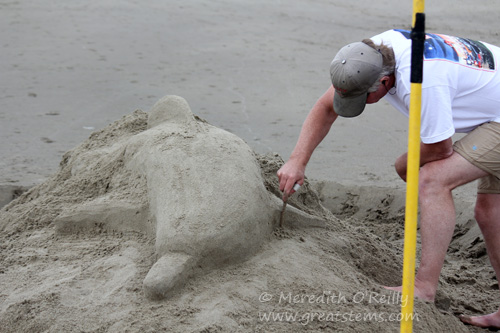
This gentleman let me snap a few pictures as he sculpted a dolphin in the sand. All he had for tools was a stick off the beach and a shovel he’d brought with him.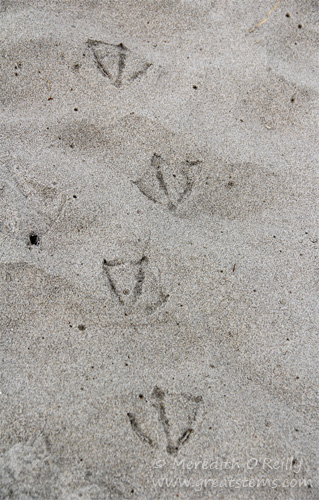
Birds don’t even need tools to make art in the sand. They just use their feet!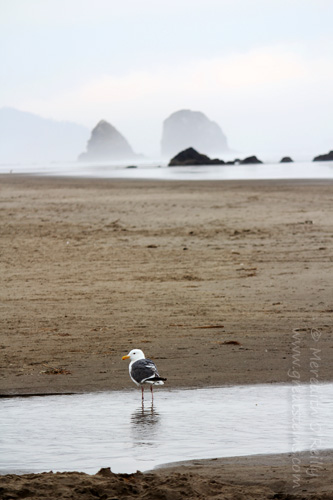
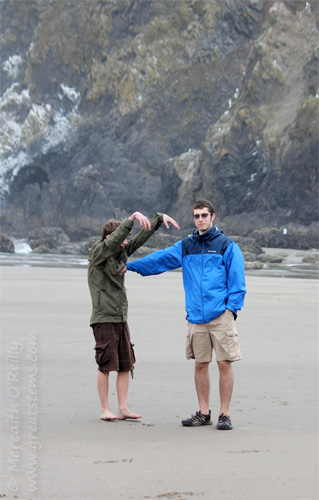
By this point Nolan apparently had turned into a zombie. We supposed that was our cue to get going, and so we did.
Our long Pacific journey of 2013 was finally over. From Seattle to Alaska, then down to Big Sur and back up the Pacific coast, we had a very fulfilling vacation. Though we knew we were heading home, it felt, too, like we were leaving another home. The boys and I had seen so much beauty and gained so much knowledge of our natural world during the trip, and our memories will last a lifetime. The Pacific is already calling to us to visit again, and we hope to do so as soon as possible.
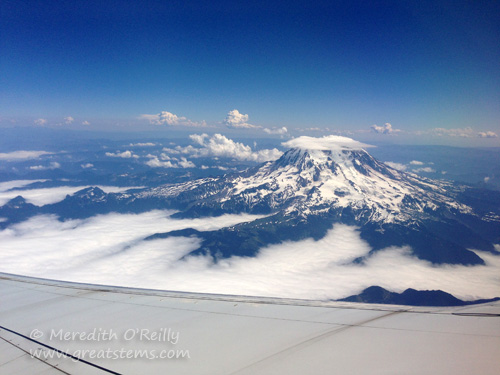
We reached Seattle that afternoon, ate a delicious seafood dinner near the bay, then prepped for our flight home the next day. Mount Rainier gave us a beautiful send-off from the airplane — nice closure, Rainier!